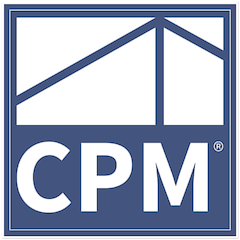The Evolution of Squatters' Rights
A historical Journey in the United States

In the realm of property law, few concepts evoke as much curiosity and controversy as squatters' rights. Often romanticized in literature and folklore, squatters' rights have a rich history deeply intertwined with the expansion and development of the United States. From the colonial era to the present day, the evolution of squatters' rights reflects the nation's changing attitudes towards land ownership, settlement, and justice.
Colonial Origins:
The origins of squatters' rights in the United States can be traced back to the colonial period. In the early days of European settlement, vast swathes of land were claimed by colonial powers, often without regard for the indigenous peoples who inhabited them. As settlers pushed westward, disputes over land ownership became commonplace.
Squatters, individuals who occupied and cultivated land without legal title, played a significant role in the westward expansion. These pioneers often moved onto unclaimed or disputed land, seeking opportunities for a better life. While their actions were technically illegal, the vastness of the frontier and the inefficiency of colonial governments made enforcement difficult.
Homesteading and the Public Domain:
The concept of squatters' rights became more formalized with the passage of the Homestead Act in 1862. This landmark legislation provided settlers with the opportunity to acquire land by living on and improving it for a specified period. By meeting certain requirements, including five years of continuous residence and the cultivation of the land, homesteaders could obtain legal title to their property from the federal government.
The Homestead Act had profound implications for the settlement of the American West. It encouraged thousands of individuals and families to migrate westward in search of land and opportunity. However, it also led to conflicts between homesteaders and existing landholders, as well as clashes with Native American tribes who were forcibly displaced from their ancestral lands.
Adverse Possession:
One of the key legal principles underlying squatters' rights is adverse possession. This doctrine, rooted in English common law, allows individuals to gain ownership of land by occupying it openly, notoriously, and continuously for a specified period, typically ranging from five to twenty years. Adverse possession serves as a means of resolving disputes over land ownership and preventing the waste of valuable resources.
In the United States, the requirements for adverse possession vary from state to state, but they generally include actual possession, exclusivity, openness, and hostility to the true owner's rights. Over time, adverse possession has evolved from a means of acquiring unclaimed land on the frontier to a mechanism for resolving boundary disputes and quieting title to urban properties.
Legal Challenges and Reform:
While squatters' rights have historically served as a means of promoting settlement and development, they have also faced criticism and legal challenges. Critics argue that squatters' rights can lead to the exploitation of vulnerable property owners and the degradation of urban neighborhoods. In response, many states have enacted laws to limit the applicability of adverse possession or to provide additional protections for property owners.
In recent years, there has been growing interest in reforming squatters' rights laws to strike a balance between promoting land use and protecting property rights. Some advocates argue for stricter requirements for adverse possession, while others call for the legalization of squatting as a means of addressing homelessness and housing affordability issues.
Contemporary Issues:
In the modern era, squatters' rights continue to provoke debate and controversy, particularly in urban areas facing gentrification and housing shortages. While some view squatting as a form of activism or resistance against economic inequality, others see it as a threat to private property rights and community stability.
The rise of online platforms and social media has also changed the dynamics of squatting, making it easier for individuals to identify and occupy vacant properties. This has led to new challenges for property owners and law enforcement agencies tasked with addressing illegal occupation.
OPINION
As part of this blog, we interviewed Gaston Reboredo, President of our company Florida Property Management Services LLC. The way he sees today's problem and we quote "The real problem is the abuse of squatters' rights we have seen over the last few years, which has been increasing over the last two decades to reach unprecedented levels. One of the main problems, as I see it, is that in most cases squatters' rights are put over property owners' rights with no equilibrium, no equality".
The history of squatters' rights in the United States is a complex and multifaceted story that reflects the nation's evolving attitudes towards land ownership, settlement, and justice. From the colonial era to the present day, squatters have played a significant role in shaping the American landscape and challenging conventional notions of property rights.
Gaston further explains, " ..and today's squatters are not squatting to cultivate the land as permissible by the Homestead Act of 1862, and they are not squatting Federal Lands looking to under certain conditions obtain title from the Federal Government, as it was done during the westward expansion of our Nation, they are intruders that invade private homes and destroy them in the process, costing millions of dollars in damages to property owners nationwide". and he furthers explains, "this great nation has always been based in the respect to private property, respect to others and there is no valid excuse, no matter how difficult somebody's housing situation may be, to invade other people's property, we have private and governmental institutions that provide shelter, help and guidance to homeless people and families in need. I am a witness to this through my Rotary Club, of which I was President back in 2006, where we partner with several organizations such as the Food Bank, Broward Partnership for the Homeless, Adopt a Family and Family Central, just ti name a few"
Furthermore we are in need of housing like never before in our Country and private investors provide a great deal of rental housing to our population but if unfriendly laws to real estate investment, such as allowing people to invade homes while the property owner goes through a lengthy eviction process to be able to get the property back, do not change, then interest in rental property investment will decline and so available housing. Then the responsibility of providing housing will start to fall in the hands of the government due to the lack of private investment and it has been proven that the government in most cases, does not know how to operate rental properties, the proof is most of the existing housing projects nationwide.
And gaston elaborates further in the matter, " the true role of the government is to provide programs, incentives and regulation for housing and rental investors but not to directly provide or operate housing to the population like it is done, with no success, in socialist or communist societies"
Several States are taking action and our Florida Legislation with total, 100% bi-partisan support and of course the support and initiate of Gov. Ron Di Santis, passed legislation providing property owners with a vehicle to remove unauthorized occupants from their properties but at the same time ensuring legal residents are fully protected.
Protect Citizens, Lawful Residents and Property Owners, we have always been One nation Under God, Indivisible with Liberty and Justice for All
Share this post













